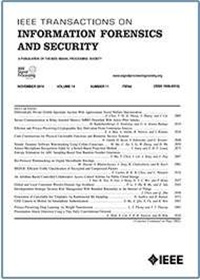PREXP:在Linux内核中发现和利用安全敏感对象
IF 8
1区 计算机科学
Q1 COMPUTER SCIENCE, THEORY & METHODS
IEEE Transactions on Information Forensics and Security
Pub Date : 2025-09-17
DOI:10.1109/TIFS.2025.3611149
引用次数: 0
摘要
安全敏感对象(sso)通常是利用Linux内核内存损坏漏洞的关键组件。虽然现有的研究已经推进了sso的识别和分类,但在系统地理解如何在现实世界的安全分析中有效利用这些对象方面仍然存在重大差距。为了应对这一挑战,我们提出了PREXP,这是一种分析sso可利用性和自动将概念验证(PoC)转换为可利用状态的新方法。我们的方法包括三个关键技术:(1)脆弱对象的能力分析和属性建模;(2)目标sso的提取和过滤;(3)使用特定于sso的代码自动增加poc以创建利用能力。为了评估我们的方法,我们在30个公开cve上测试了我们的原型,成功解析了22个(73.3%)脆弱对象,并在18个(60.0%)中实现了准确的单点登录匹配。PREXP在结构匹配方面优于SCAVY和AlphaEXP等最先进的工具,并且能够为3个以前未被利用的漏洞生成新的控制流劫持原语(cfhp),展示了其在现实世界漏洞开发中的实用价值。本文章由计算机程序翻译,如有差异,请以英文原文为准。
PREXP: Uncovering and Exploiting Security-Sensitive Objects in the Linux Kernel
Security-Sensitive Objects (SSOs) are often critical components in the exploitation of Linux kernel memory corruption vulnerabilities. While existing research has advanced SSOs identification and classification, there remains a significant gap in systematically understanding how these objects can be effectively exploited in real-world security analysis. To address this challenge, we present PREXP, a novel approach to analyzing SSOs exploitability and automating the transformation of Proof-of-Concept (PoC) into exploitable states. Our approach encompasses three key techniques: (1) capability analysis and attribute modeling of vulnerable object (2) extraction and filtering of target SSOs and (3) automatically augmenting PoCs with SSO-specific code to create exploitation capabilities. To evaluate our approach, we tested our prototype on 30 public CVEs, successfully parsing vulnerable object in 22 cases (73.3%) and achieving accurate SSO matches in 18 (60.0%). PREXP outperformed state-of-the-art tools such as SCAVY and AlphaEXP in structure-matching, and enabled the generation of new Control Flow Hijacking Primitives (CFHPs) for 3 previously unexploited vulnerabilities, demonstrating its practical value in real-world exploit development.
求助全文
通过发布文献求助,成功后即可免费获取论文全文。
去求助
来源期刊

IEEE Transactions on Information Forensics and Security
工程技术-工程:电子与电气
CiteScore
14.40
自引率
7.40%
发文量
234
审稿时长
6.5 months
期刊介绍:
The IEEE Transactions on Information Forensics and Security covers the sciences, technologies, and applications relating to information forensics, information security, biometrics, surveillance and systems applications that incorporate these features
 求助内容:
求助内容: 应助结果提醒方式:
应助结果提醒方式:


